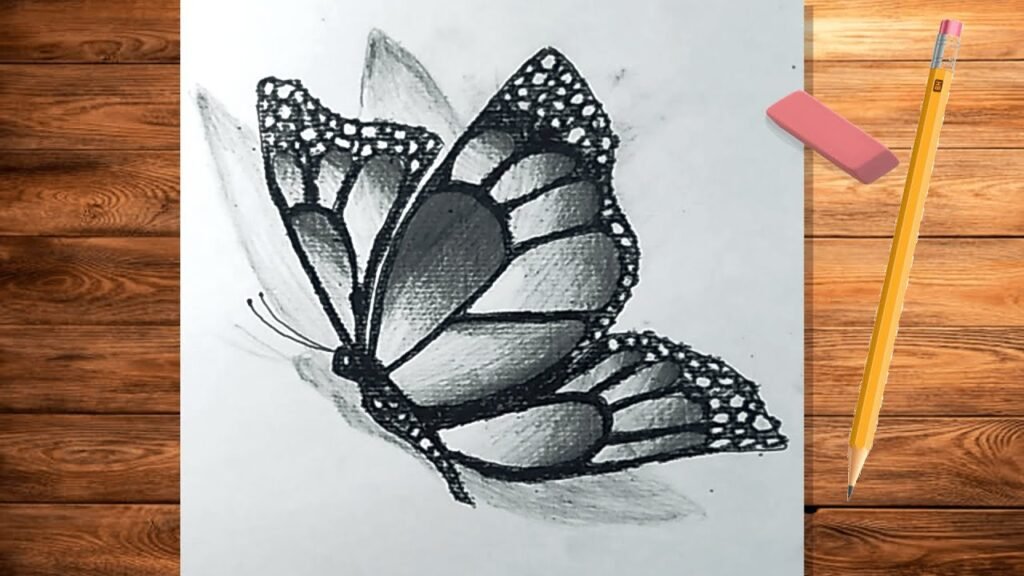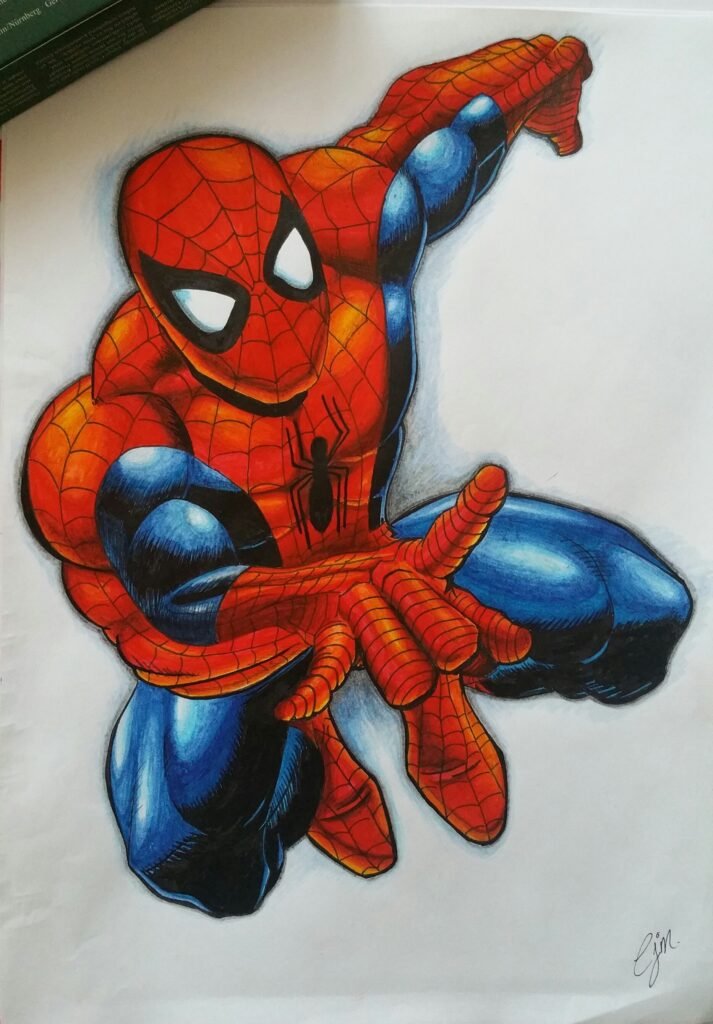Introduction to drawing butterflies
Drawing:5dlmdowxula= Butterfly: Butterflies are nature’s delicate masterpieces, captivating hearts with their vibrant colours and graceful movements. Whether fluttering through gardens or resting on a flower, they evoke a sense of wonder that inspires many to pick up a pencil and draw. Ifyou’vee ever found yourself enchanted by these creatures and yearned to capture their beauty on paper,you’ree in the right place! Drawing butterflies can be both fun and rewardingit’ss an artistic journey that combines observation, creativity, and technique. So get ready to spread your wings as we explore tips for drawing butterflies like a pro!
Drawing:5dlmdowxula= Butterfly

Butterflies are enchanting creatures that capture the imagination. Their vibrant colours and intricate patterns make them a favourite subject for artists.
When starting your journey into drawing butterflies, it’s essential to oit’sve real butterflies closely. Notice their delicate wings and unique shapes. This understanding will enhance your skills significantly.
Begin with basic shapes to outline your butterfly’s body anbutterfly’se circles for the head and abdomen, while triangles or curves can depict the wings’ structure.
Ewings’entation is key in this process. Don’t shy away fromDon’tng different styles; whether you prefer realism or whimsical interpretations, each approach offers its charm.
Adding detail brings life to your artwork—enhance texture by using fine lines along the wings or incorporating dots of colour for depth. With practice, you’ll find joy in creyou’llstunning representations of these beautiful insects.
Understanding the anatomy of a butterfly

Butterflies are remarkable creatures, showcasing a delicate yet intricate anatomy. Their bodies consist of three main parts: the head, thorax, and abdomen.
The head is home to essential features like compound eyes and antennae. These help butterflies navigate their environment and sense chemicals in the air.
Moving down, the thorax houses six legs and two pairs of wings. Each wing is covered with tiny scales that reflect light, creating vibrant colours and patterns that can captivate any observer.
The abdomen contains vital organs for digestion and reproduction. This section plays an important role in a butterfly’s life cyclbutterfly’snding these anatomical details can enhance your drawing skills significantly. You’ll appreciate howYou’llpart contributes to its overall beauty while you capture its essence on paper.
Step-by-step guide on how to draw a butterfly

Start with a simple outline. Draw two elongated shapes for the wings, flaring out from a central body. This creates the basic structure.
Next, add curves to each wing. Think of gentle arches that mimic nature’s elegance.
Nonature’sh the antennae on top of the head. A slight curl at each end adds charm and character.
Once you have your basic shape, refine it by adding patterns. Butterflies are known for their unique designs—dots, lines, or swirls work beautifully here.
After detailing the wings, focus on shading. Lightly shade areas where shadows would naturally fall to give depth and dimension.
Erase any unnecessary lines gently to clean up your drawing while maintaining its essence. Each step brings you closer to capturing that enchanting butterfly look!
Tips and techniques for adding details and shading
When it comes to enhancing your butterfly drawings, details and shading can make all the difference. Please start with the wings; they are often the most striking feature. Use a fine-tipped pen or pencil to create delicate lines that mimic the intricate patterns found in nature.
For shading, consider where your light source is coming from. Shadows typically fall on the underside of wings. Gently build up layers of graphite or coloured pencils for depth. Remember, less is often more—start softly and gradually increase intensity.
Experiment with blending tools like tortillons or even your fingers to achieve smooth transitions between light and dark areas. This technique can add realism and dimension.
Don’t shy awaDon’tm colour! Use vibrant hues in specific sections while allowing some areas to remain lighter for contrast. Play around until you find a balance that feels right for your artwork; creativity thrives on experimentation!
Common mistakes to avoid when drawing butterflies
When embarking on your butterfly drawing journey, it’s easy toit’srlook some details. One common mistake is neglecting symmetry. Butterflies are known for their harmonious wings; uneven shapes can throw off the entire piece.
Another pitfall is failing to observe real butterflies closely. Relying solely on memory or imagination might lead to inaccuracies in wing patterns and anatomy. Study reference images or even live specimens if possible.
Many artists also underestimate the importance of light and shadow. Overly flat drawings lack depth and dimension, making them appear lifeless. A few well-placed shadows can breathe life into your work.
Don’t forgetDon’tt proportion. Sometimes, artists make wings too large or small compared to the body, disrupting balance. Keep an eye on these elements while you draw for a more realistic depiction of these beautiful creatures.
Inspiration for using different mediums and styles
Exploring various mediums can breathe life into your butterfly drawings. Watercolours offer a soft, dreamy quality that mimics the delicate nature of these creatures. The blending of colours can create stunning effects that are both vibrant and ethereal.
If you’re feeyou’redventurous, try using pastels for a more textured look. Their chalky finish adds depth, allowing you to experiment with layering and blending techniques.
Digital drawing is another exciting avenue. With software like Procreate or Adobe Fresco, you can easily manipulate colours and shapes to achieve unique styles. You also have the freedom to undo mistakes instantly.
For those who love mixed media, consider combining traditional pencils with collage elements or ink washes. This approach creates an interesting contrast that captures attention and invites curiosity about your creative process.
Each medium tells its own story; it’s all it’st what resonates with you as an artist.
Conclusion: Embrace your creativity and have fun with your butterfly drawings!
Embrace the joy of drawing butterflies. Each stroke of your pencil can transform a blank page into a vibrant piece of art.
Experiment with colours and styles that speak to you. Let your imagination take flight, as butterflies are not just delicate creatures; they represent freedom and change.
Don’t beDon’tid to make mistakes along the way. Every artist has their journey filled with learning moments.
Celebrate your uniqueness in every butterfly you create. Whether whimsical or realistic, each drawing tells its own story.
Remember, the process is just as important as the final product. Enjoy yourself in this artistic endeavourr—let theth creativity flow like a gentle breeze on a sunny day!
FAQs: Drawing:5dlmdowxula= Butterfly
Curious about drawing butterflies? Here are some frequently asked questions to help you navigate your artistic journey.
What materials do I need to start drawing a butterfly?
You can begin with basic materials like paper and pencils. As you progress, consider adding coloured pencils or markers for vibrant artwork.
How do I choose the right colours?
Observe real butterflies or reference photos to see their natural colours. You might want to use a colour palette that reflects their beauty while adding your personal touch.
Can I draw a butterfly from memory?
Absolutely! While references can be helpful, trusting your creativity allows for unique interpretations of butterflies. DoDon’tesitate to experiment with different shapes and patterns.
What if my butterfly dodoesn’took realistic?
Remember, art is subjective. Focus on expression rather than perfection. Your style will develop over time as you practice more.
How often should I practice my butterfly drawings?
Regular practice leads to improvement. Set aside dedicated time each week, even just 30 minutes, and watch your skills grow.
Feel free to explore these questions further or reach out if you have specific inquiries about drawing butterflies. Embrace the process and enjoy every stroke of your pencil!




Pingback: Master the Fundamentals of Drawing:V04hso9zvvq= Art